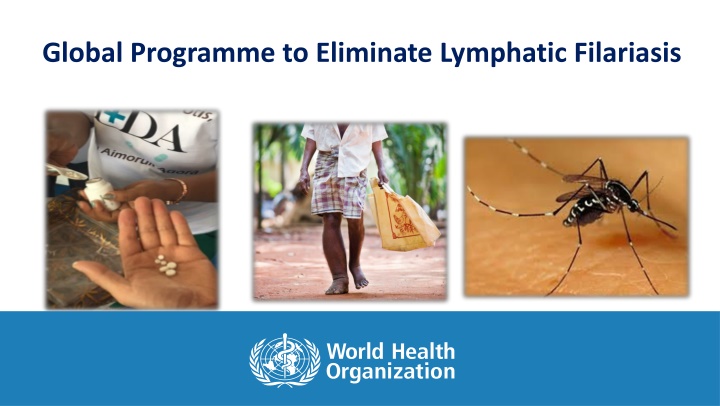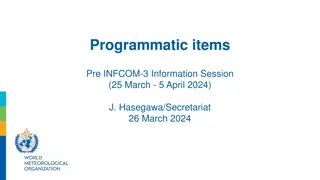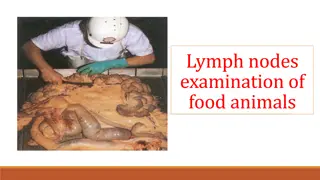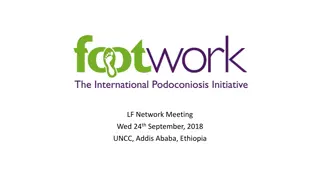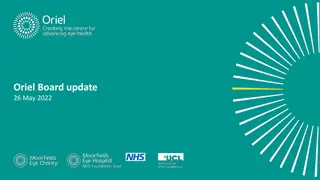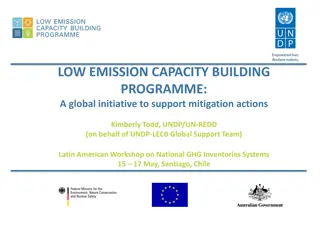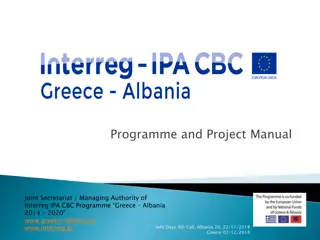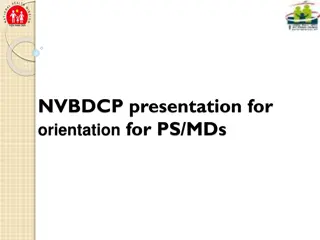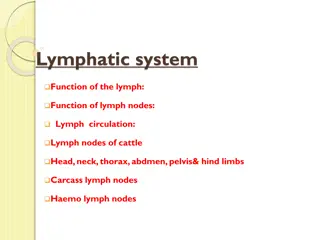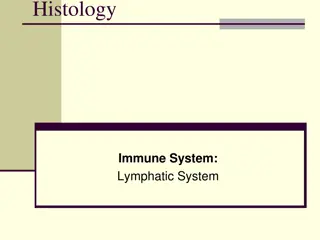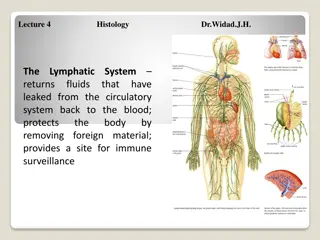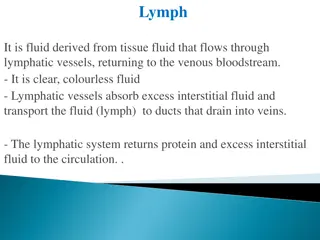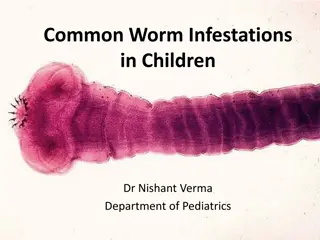Achievements and Progress of the Global Programme to Eliminate Lymphatic Filariasis
The Global Programme to Eliminate Lymphatic Filariasis (GPELF) aims to eradicate LF as a public health problem through mass drug administration and morbidity management. Significant achievements include treating billions of individuals, reducing infection rates in many countries, and validating LF elimination in several nations. Progress varies across countries, with some successfully implementing strategies while others are still in earlier stages. The GPELF operates through partnerships and donor finances, providing hope for the elimination of LF globally.
Download Presentation

Please find below an Image/Link to download the presentation.
The content on the website is provided AS IS for your information and personal use only. It may not be sold, licensed, or shared on other websites without obtaining consent from the author.If you encounter any issues during the download, it is possible that the publisher has removed the file from their server.
You are allowed to download the files provided on this website for personal or commercial use, subject to the condition that they are used lawfully. All files are the property of their respective owners.
The content on the website is provided AS IS for your information and personal use only. It may not be sold, licensed, or shared on other websites without obtaining consent from the author.
E N D
Presentation Transcript
Global commitment WHA 50.29 Elimination of LF as a public health problem Global Programme to Eliminate Lymphatic Filariasis (GPELF) was launched in 2000 1. Interrupt transmission Mass drug administration (MDA ) 2. Reduce suffering and improve quality of life Morbidity management and disability prevention (MMDP) Slide 2
GPELF exists through partnerships Donor Finances Implementation & research Academic WHO CC Research NPELF national programmes to eliminate LF GAELF Global Alliance to Eliminate Lymphatic Filariasis Slide 3
The GPELF strategy has led to substantial achievements: 69 countries implementing MDA, delivering a cumulative total of 7.1 billion treatments reaching more than 890 million people 52 countries reducing infection below target thresholds and no longer requiring MDA in at least 1 district 22 countries no longer requiring MDA nationally 15 countries having achieved the validation criteria for elimination of LF as a public health problem Slide 4
GPELF Progress: MDA status of countries 2019 MDA scaled to all endemic districts Post-MDA Surveillance Post Validation Surveillance MDA started but not at scale MDA not started Malawi Benin, Burkina Faso Chad, Cameroon, C te d Ivoire, Ethiopia, Ghana, Guinea, Liberia, Mali, Mozambique, Niger, Senegal, Sierra- Leone Tanzania, Uganda, Comoros , Kenya, Eritrea Zambia, Zimbabwe Sao Tome & Principe Angola Central African Republic Congo Democratic Republic Congo Guinea-Bissau Nigeria South Sudan Sudan Equatorial Guinea Gabon Brazil Dominican Republic New Caledonia Egypt Yemen Togo Maldives Sri Lanka Thailand Cambodia Cook Islands Marshall Islands Niue Tonga Vanuatu Palau Vietnam Wallis and Futuna Madagascar Bangladesh Haiti Guyana Brunei Darussalam India, Indonesia Myanmar Nepal Timor-Leste American Samoa French Polynesia, Tuvalu Fiji, FSM, Malaysia, Samoa, Philippines 36 (50%) Papua New Guinea Kiribati Lao PDR 11 (15%) 3 (4%) 7 (10%) 15 (21%) Slide 5
New NTD Roadmap targets for 2030 58 countries validated for elimination as a PHP defined as -infection sustained below TAS thresholds for at least 4 years after stopping MDA -availability of minimum package of care in all areas of known patients 72 (100%) countries implementing post-MDA or post- validation surveillance MDA no longer required Slide 6
GPELF Priorities 2021-2030 MMDP Action Required Milestones & Indicators 100% (72) countries included LF interventions in UHC essential package by 2025 Prioritize MMDP within primary health care as part of UHC Countries monitoring LF morbidity and available care by IU 100% (72) countries reporting to WHO at least partial data by 2023 and complete data by 2025 Countries have data on quality of the provision of care 100% (72) countries have met dossier requirements to report on quality and readiness by 2030 Slide 7
Other critical actions needed - MMDP Improve capacity for MMDP within primary healthcare Ensure accessible and inclusive care for patients to reduce stigma and improve mental wellbeing are part of UHC essential packages Ensure availability of functional facilities for MMDP in the primary healthcare system, including materials for lymphedema management, hydrocele surgery and medicines to treat acute attacks Create link with Global Surgery Initiatives to ensure availability of surgery in IUs with known hydrocele burden, and with Social services, rehabilitation and mental health to build capacity for assessment and referral for psychosocial support Slide 8
GPELF Priorities 2021-2030 - MDA Action Required Milestones & Indicators Need for MDA in all uncertain districts defined by 2021 Map uncertain areas 100% geographical coverage globally with WHO recommended MDA regimen by 2021 Implement IDA where warranted Revitalize MDA to achieve high compliance: -build capacity in social mobilization, microplanning, and supervision Every year, all IU s target 100% of eligible population in each round 100% eligible IUs implement surveys at recommended timing Build capacity - emphasis on quality pre-TAS and TAS implementation Sustainable resources for programme activities and post- validation surveillance Facilitate government support, mobilize resources, expand partnerships Slide 9
Other critical actions needed - MDA Develop strategies to mitigate hot-spots of persistent infection and reach missed populations Develop new approaches for urban MDA Develop diagnostic test which is not cross-reactive with L. loa Improve reliability of current diagnostic tests; Ensure reporting of issues with diagnostic tests for quality monitoring Slide 10
Critical actions needed - surveillance Improved diagnostics for post-MDA surveillance Encourage sustained commitment post-validation to avoid recrudescence Specify the minimum standards for post-validation surveillance (PVS) and how to set up and maintain activities Integrate vector management and surveillance (where feasible) through the Global Vector Control Response to supplement MDA Define criteria to achieve verification of interruption of LF transmission Slide 11
Thank you Thank you Please send Please send questions to: questions to: kingj@who.int kingj@who.int courtesy of Zanzibar & GSK
Status of IDA implementation 2019 Assessing need for IDA Considering IDA Started IDA Planning IDA Comoros Zambia Zimbabwe Kenya Sao Tome & Principe Eritrea Madagascar Haiti Egypt Guyana Nepal Myanmar French Polynesia FSM India Timor Leste Indonesia Malaysia American Samoa Samoa Papua New Guinea Fiji New Caledonia Tuvalu Philippines 4 10 6 5 Slide 13
